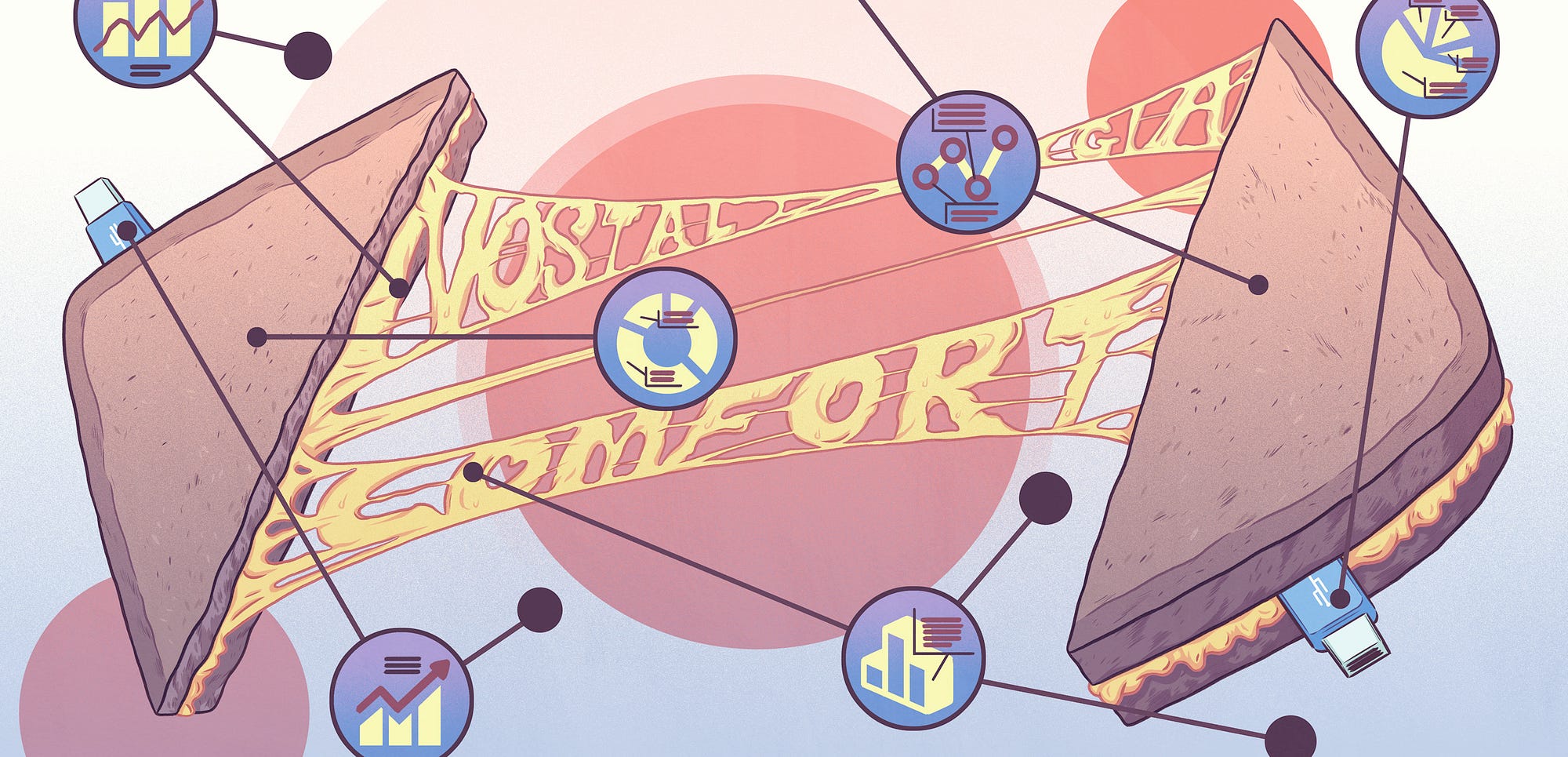From Backchannel:
The Melt had cash, technology, and some of Silicon Valley’s finest minds — yet it failed to disrupt the humble sandwich.

(Illustration by Tom Humberstone)
In the spring of 2011, more than 500 tech luminaries, kingmakers, entrepreneurs, and journalists convened in southern California for the D: All Things Digital Conference. The sold-out event promised “digital disruption out the wazoo,” and a crowd had shelled out $4,795 a head for a lineup of heavyweights the likes of Eric Schmidt, Reed Hastings, and Marc Andreessen.Waiting in the wings was a smaller, but still recognizable name: Jonathan Kaplan, one of Silicon Valley’s prodigal sons with a moonshot of a second act. The founder of Pure Digital Technologies, a maker of cameras and video recorders, Kaplan had first walked onto the All Things D stage six years earlier to debut his Flip video camera. The Flip quickly became a consumer favorite; four years post-debut, Kaplan sold his company to Cisco for $590 million. But true to the entrepreneur trajectory, Kaplan found the stability of a large company stultifying. He wanted to change the world one more time.His new project, Kaplan teased, was “founded on the exact same fundamentals” as the Flip. After a few warm-up questions from his interviewers, tech journalists Kara Swisher and Walt Mossberg, Kaplan revealed the cutting-edge creation he was poised to unleash: grilled cheese sandwiches. Five different kinds of them, in fact. Featuring not only cheddar, but also fontina, gruyere, and jalapeño jack.The new company was called The Melt. Its motto seemed cribbed from the clumsy English slogans sometimes featured on Asian T-shirts: “Grilled Cheese Happiness.” The sandwiches formed a minimalist menu, accompanied only by soup. “It turns out when you put soup and grilled cheese together, it’s really wonderful,” Kaplan informed his audience, as if divulging a trade secret.Forget Mars colonies and AI. Kaplan declared he had “developed a set of technology that allows us to make the perfect grilled cheese.” The innovation was as meaningful as it was miraculous: the sandwich had “that nostalgic thing,” Kaplan explained. Grilled cheese sandwiches were the fast food equivalent of Proust’s madeleines, priming them for disruption.Swisher and Mossberg openly smirked. “I feel like this is post-traumatic stress from Cisco,” said Swisher. “I think he went home and looked at his money,” Mossberg deadpanned.Kaplan was unfazed. Armed with a tech founder’s unflappable confidence and ambitious growth targets, he announced plans to open 500 fast-casual outlets within five years — all of them company-owned, not franchised. Never mind that it had taken Chipotle three times as long to hit that milestone using the same model. Kaplan felt confident in his melted-cheese rocket ship.The Melt boasted an elite group of investors — including Sequoia Capital, better known for its bets on Instagram and YouTube — and enough cash to launch twenty restaurants, at a cost of $500,000 to $1 million apiece. Kaplan had recruited some of the Bay Area’s top names, including Michelin-starred chef Michael Mina and former Apple executive Ron Johnson, the genius behind the tech giant’s retail stores.With the home appliance company Electrolux, he’d created a device that delivered a restaurant-quality sandwich in 45 seconds flat—a “huge breakthrough” in sandwich technology. (“Sandwich presses have been around forever,” protested a skeptical Mossberg. “Not a sandwich press!” Kaplan retorted. “This is two induction burners! Microwaves! Silpats!”)Next month marks the six-year anniversary of The Melt’s onstage debut. Far from 500 stores, it now runs a grand total of 18 outlets. In the years since it first opened shop, The Melt has grown in fits and starts — launching, then dismantling, a fleet of food trucks, for example. Last September, Kaplan was replaced as CEO by Ralph Bower, a restaurant industry executive with more than 25 years of experience at companies like Domino’s Pizza and KFC.Falling short of its 500 restaurant goal hardly qualifies The Melt as a flop. Shake Shack, the burger chain founded by longtime restaurateur Danny Meyer’s Union Square Hospitality Group, took 13 years to reach one hundred outlets and is now worth over $1 billion. But former employees at The Melt, ranging from the top echelons of the company to in-store crew members, tell a complicated story of a company that had to roll out sweeping changes to its initial model after overestimating the competitive advantage of its technology — which proved to be both a source of strength and, at times, a liability.The Melt’s blundering trajectory is instructive, as Silicon Valley wunderkinds seek to recast everyday objects with help from algorithms and apps. Entrepreneurs frequently embark on these missions with vast sums of money and a deep belief in technology’s power to solve all problems — which is not always a formula for success in the brick-and-mortar business of ordinary life: delivering groceries, selling luggage, or making sandwiches.“Don’t let the fact that it’s just grilled cheese fool you,” said a former senior leader at The Melt, speaking on condition of anonymity.....MUCH MORE